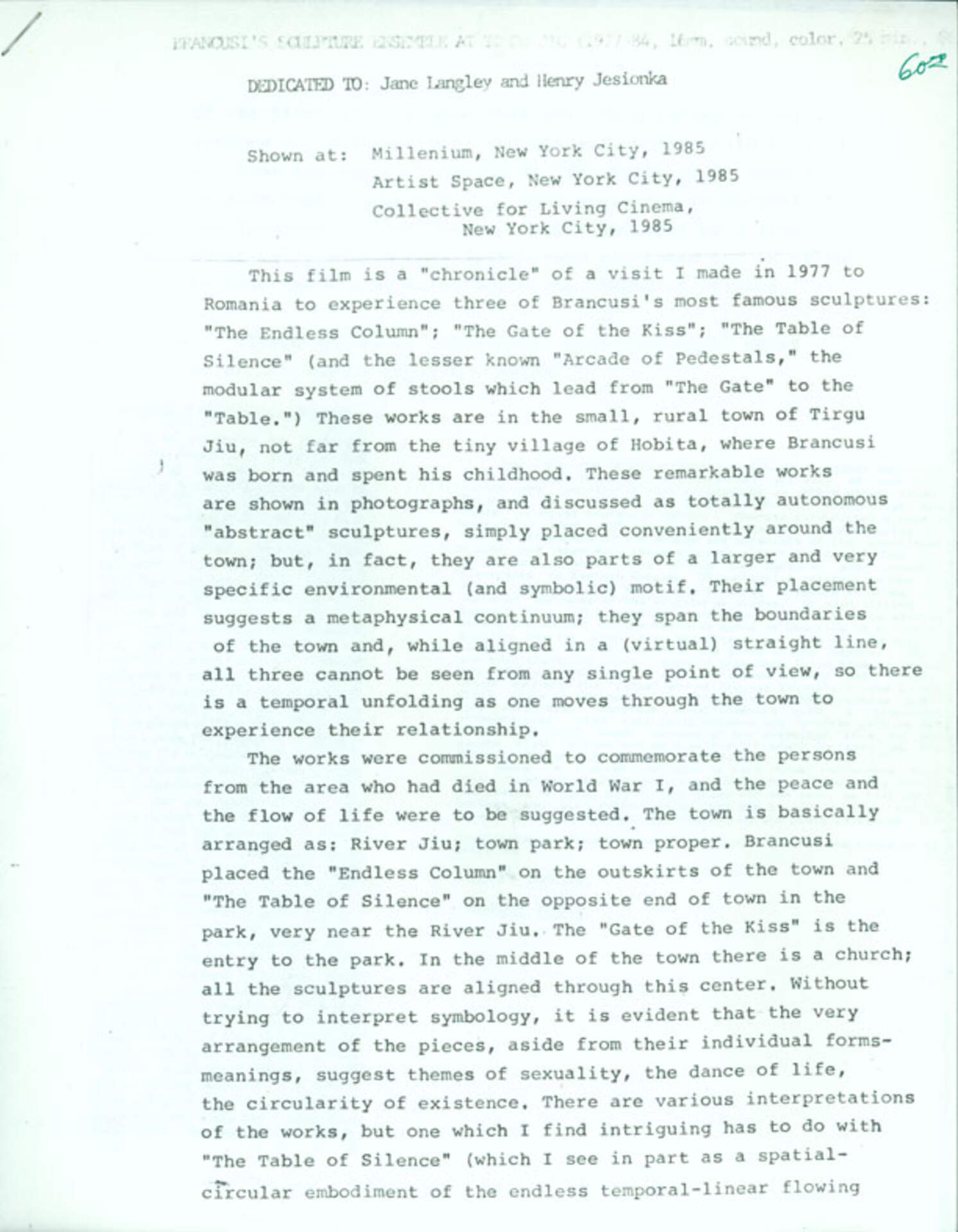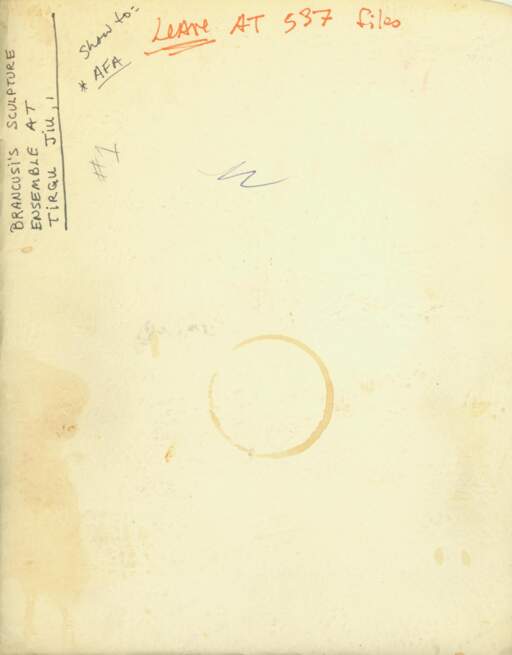Paul Sharits (1943-1993)Untitled (Project Description)
1985
photocopy
11 x 8 1/2 inches
Gift of Christopher and Cheri Sharits, 2006
DEDICATED TO: Jane Langley and Henry Jesionka
Shown at: Millenium, New York City, 1985
Artist Space, New York City, 1985
Collective for Living Cinema
New York City, 1985
This film is a “chronicle” of a visit I made in 1977 to Romania to experience three of Brancusi’s most famous sculptures: “The Endless Column”; “The Gate of the Kiss”; “The Table of the Silence” (and the lesser known “Arcade of the Pedestals,” the modular system of the stools which lead from “The Gate” to the “Table.”) These works are in the small, rural town of Tirgu Jiu, not far from the tiny village of Hobita, where Brancusi was born and spent his childhood. These remarkable works are shown in photographs, and discussed as totally autonomous “abstract” sculptures, simply placed conveniently around the town; but, in fact, they are also parts of a larger and very specific environmental (and symbolic) motif. Their placement suggests a metaphysical continuum; they span the boundaries of the town and, while aligned in a (virtual) straight line, all three cannot be seen from any single point of view, so there is a temporal unfolding as one moves through the town to experience their relationship.
The works were commissioned to commemorate the persons from the area who had died in World War I, and the peace and flow of life were to be suggested. The town is basically arranged as; River Jiu; town park; town proper. Brancusi placed the “Endless Column” on the outskirts of the town and “The Table of Silence” on the opposite end of the town in the park, very near the River Jiu. The “Gate of the Kiss” is the entry to the park. In the middle of the town there is a church; all the sculptures are aligned through this center. Without trying to interpret symbology, it is evident that the very arrangement of the pieces, aside from their individual forms- meanings, suggest themes of sexuality, the dance of life, the circularity of existence. There are various interpretations of the works, but one which I find intriguing has to do with “The Table of Silence” (which I see in part as a spatial-circular embodiment of the endless temporal-linear flowing


